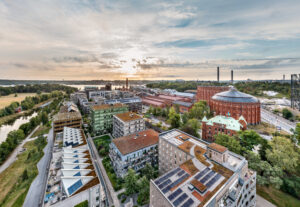Climate adaptation means preparing societies and urban areas for new risks that arise as climate change is affecting our surroundings. By taking climate adaption measures into the urban planning process, effects on humans and society can be reduced.
As a complement to Sweden’s efforts to mitigate greenhouse gas emissions, adaptation measures are needed to prepare society, and infrastructure and build environments to the effects of climate change that are visible today and those that cannot be hindered in the future. Climate adaptation is not only beneficial to cities but also to the humans and animals living there, in terms of reduced health risks, increased biodiversity, and prevention of injuries.
A warmer climate means more risks
According to evaluations from the IPCC and the Swedish Meteorological and Hydrological Institute (SMHI), Sweden will experience a warmer and more humid climate in the future, with changing patterns of precipitation, increased events of heavy rainfall, more frequent extensive droughts, and heatwaves along with rising sea levels. This will lead to an increase in climatic risks such as flooding, erosion, landslides, forest fires, and droughts. The effects of climate change will have a tremendous impact on infrastructure, city planning, land use, and water management – societal sectors that are currently being carried out within the frames of the existing climate.
Climate adaptation in urban planning
Climate adaptation means technical and physical changes, but also means gathering information and notifying concerned groups, applying ecosystem services in urban areas and new ways of thinking when constructing buildings, infrastructure, and other aspects of urban life.

Image by Jann Lipka/Imagebank.sweden.se
Adaptation poses a great challenge to existing planning norms, legislation and practices and can be expensive to apply, but there are also extensive business opportunities in innovative climate adaptation solutions within the realm of urban planning. The cost of climate adaptation and prevention is usually cheaper than the costs of the consequences that a changing climate will bring. In order to create a long-term, sustainable adaption, risk and vulnerability analysis are key.